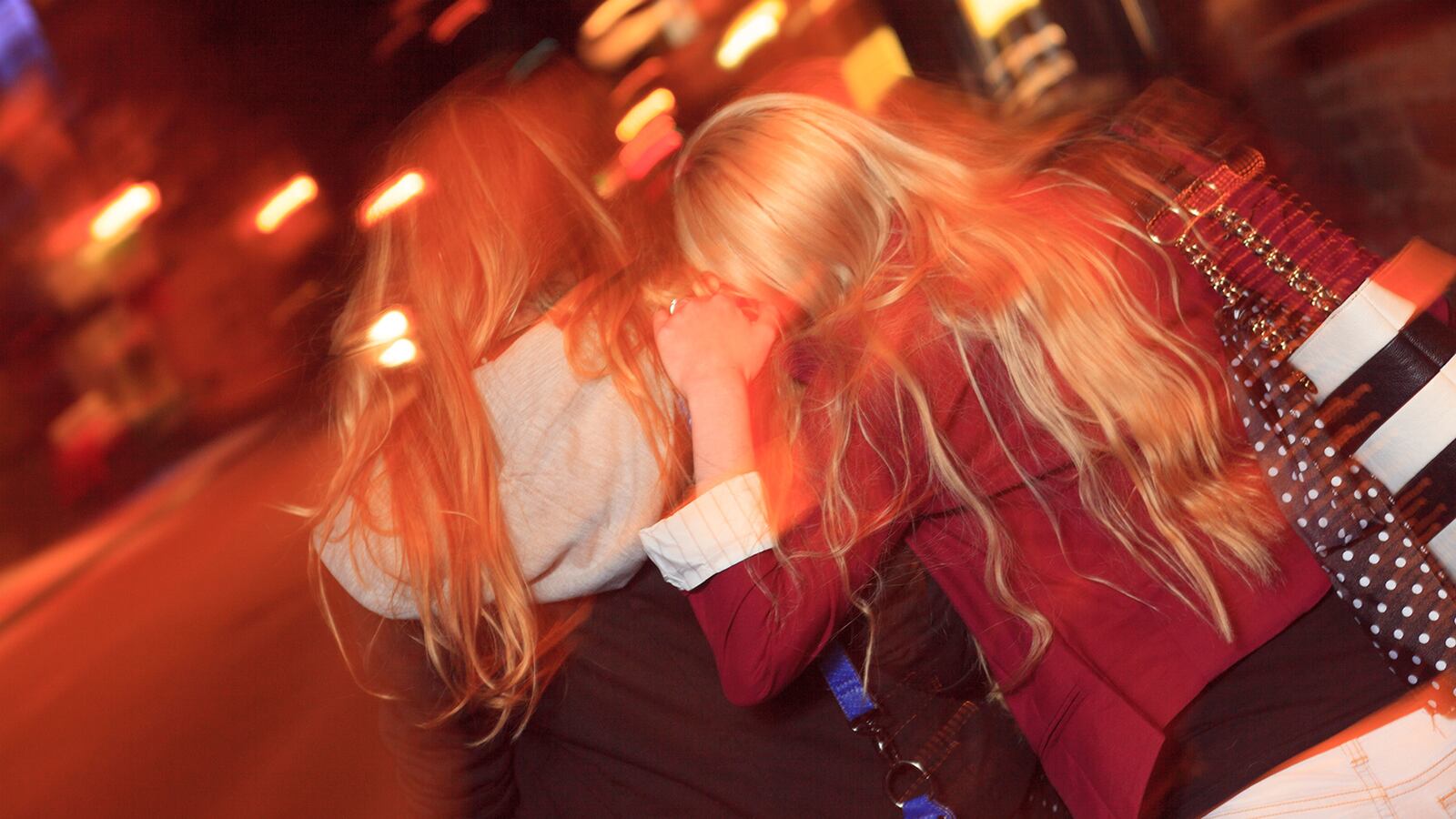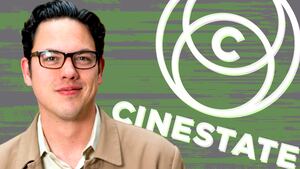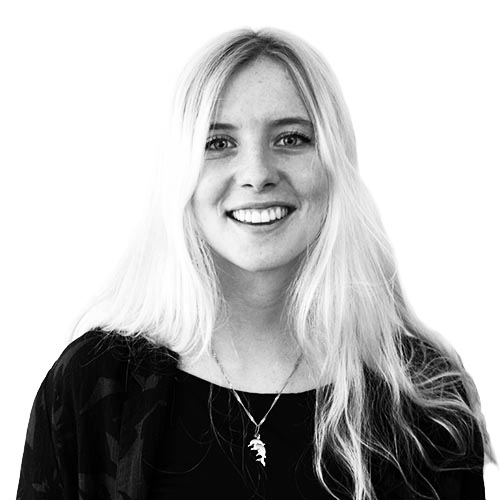In early 2019, not long after a 22-year-old model named Rowan Rice moved to Los Angeles from Chino Hills, California, she took up the bi-weekly routine of going out alone. And every Wednesday and Friday, she always went to the same spot: a Hollywood nightclub called Warwick. She’d heard it was the safest venue in the city and the hardest to get into. Rice went out alone in part because she liked to go out and her friends did not, but also because in Los Angeles, where success in entertainment can spring from a single conversation with the right person, nightclubs serve as informal networking events. As a model, it was all but mandatory. “It was really fun, honestly, at first,” Rice said, “until March.”
On March 22, Rice showed up at Warwick. After a few weeks, she had made some acquaintances there, though none were out that night. But one of the owners recognized her. He asked if she had a table—the VIP real estate usually reserved for promoters and big-ticket clients. She did not. So he assigned her one: on the stage with a high-profile promoter. Rice had a few drinks. But she did not know anyone at the table, so she switched to water at 1 a.m. From there, things got hazy. In L.A., nightclubs and bars notoriously close at 2 a.m., pushing night owls into unregulated afterparties at private homes or pop-ups. That night, Rice went to two. She doesn’t know who hosted them or where they were. She remembers small details, like someone popping champagne, or two middle-aged men in suits standing on the balcony. The rest she reconstructed from texts, reviewed by The Daily Beast, which she sent to her roommate after waking up at 5:36 a.m. in an unfamiliar bed.
“I’ve been drugged,” she wrote. “And they’re trying to not me tell that I’ve been drugged [sic]. I stopped drinking at 1am. But I cannot see straight. I don’t know what to do. The girl I’m with says they gave me something. I don’t know what to do. It’s been almost 5 hours since I’ve drank and I cannot see straight. This hasn’t happened to me before. I want to go home.”

The Hollywood nightclub scene, most of which sits within the same two-mile radius around the Walk of Fame, is an ecosystem all to its own. There are the promoters, contractors hired by clubs to attract high-profile guests, who are all well-known within the circuit. There are the table-buyers, usually affluent guys who pay for bottle service and rack up five-digit tabs. There are the models and actresses, who tend to get in for free. And there’s everyone else, the average Joes who wait in line to get in, if they get in at all, and are regularly subjected to discrimination, that quickly gets racist or classist. “Got denied after a blonde woman with 90s Jennifer Aniston highlights let two girls in with Forever 21 sweatshirts, no ID’s and not on the guest list,” one woman wrote on the Warwick Yelp page. “She told me that ‘I let in whoever I want to let in and you do not have the look.’”
For those on the inside, a false move or statement can get someone sent off the list and into the line. The social contract is fragile—so much so that seven of the 14 people interviewed for this article requested anonymity over fear of retaliation, and nearly all asked to discuss certain subjects on background. But in mid-March, California Governor Gavin Newsom ordered the immediate closure of bars and nightclubs, shutting down the state’s $3 billion industry indefinitely. In its absence, a movement has emerged on social media confronting the rampant use of date-rape drugs and calling for reform.
“I’ve always worked in nightlife my whole career—in Virginia Beach, Washington, D.C., Tampa Beach, and San Diego,” said Katherine Lawson, a club worker and stand-up comedian, who is in a group chat of roughly 40 local women discussing drugging incidents. “I’ve never been drugged in my entire life, until I moved to L.A. Now, I don’t know that many girls who haven’t been drugged in L.A.”
The catalyst was a wrongful death case filed by the parents of Kimberly Fattorini, a former Playboy model and hostess, who died in July 2017 after going out with a Warwick promoter named Elias Wehbe and former NFL linebacker Shawne Merriman. The coroner found traces of the date rape drug Gamma Hydroxybutyrate, or GHB, in her system. In April, an Instagram account called Celeb ™, founded by controversial blogger, Nik Richie, circulated screenshots of the complaint, filed nine months prior, featuring texts Fattorini sent the night she died.
Both men denied drugging Fattorini. But Wehbe issued an apology on his website for some texts he sent that night, in which he called Fattorini and her friends “whores” and “scum” and described putting a “weak” one to sleep, adding the “coke dealer can bang her.” Warwick, which did not return requests for comment, dismissed Wehbe. “We remain committed to the operation of a safe and responsible venue,” they wrote in a statement on Instagram, “as we have been since our founding.”
After the case went viral, a group of Los Angeles models and influencers, spearheaded by the actress Elsie Hewitt, formed a campaign on social media to raise awareness about Fattorini’s death. But the campaign also touched on the prevalence of drugging in local venues, prompting users to comment with their own stories, often under photos, or with the hashtag #justiceforkim.
Celeb ™ alone has published 10 anonymous testimonies from victims of drugging incidents and harassment from prominent Los Angeles promoters.
When The Daily Beast covered the case, two of the women in the group cited personal experiences with drugging, and three women, including Rice, later reached out with similar stories. “I was just struck by how similar [my texts were] to the texts Kim sent before she died,” Rice said. “How they don’t really make sense. You can tell it took all of the power in me to try and write all of that.” In total, The Daily Beast spoke to 14 people in L.A. nightlife, eight of whom said they had been drugged, some more than once, and all of whom knew of another person who had.
Lawson, who said she had been drugged twice, first encountered GHB in June of 2018 while out at a Hollywood club where she worked (Lawson declined to name the place, as she had once worked there, but said it was “near Highlight Room” in Hollywood). She had been sitting at a table with a promoter, who asked whether she preferred vodka or tequila. She answered tequila. Soon, his client handed her a shot. “But it tasted like water—it tasted weird,” she said. “So, immediately after taking it, I asked him, ‘What did you give me? That didn’t taste like tequila.’ The guy told me it was ‘G,’ which, as I found out, is a date-rape drug. But I’d never been drugged before. I didn’t know what ‘G’ was.”

The next morning, Lawson went to the Hollywood police station and filed a report. She later got a rape kit performed, though too many hours had passed to test for GHB. “But they never caught him or anything like that,” she said. “No charges have been pressed.”
The second time took place this year at the same venue. Lawson said she recognized the feeling, but did not know who had given it to her. “My friend was there, because it was where I used to work, and they carried me upstairs. But I got really ill. I was projectile vomiting everywhere. It was disgusting. They took care of me because it was a place where I used to work. And because my girlfriend, who also works at that venue, has also been drugged there.”
Vanessa Matic, a poet and author of the upcoming collection Romance & Revolution, told The Daily Beast she attended an issue party for a Los Angeles fashion magazine last September at the Highlight Room in Hollywood. Matic said she never does drugs and rarely drinks. But someone handed her a cocktail, so she took it and sipped. “I didn’t even finish the drink. It was less than half, I think, that I drank,” Matic said. “But I started feeling really weird.”
She was so visibly out of it, Matic said, that when she began chatting with a stranger, who has since become her fiancé, some friends intervened. “They were like, you can’t be hanging out with them. They saw that I was wobbly for the first time ever. I could not walk straight,” Matic said. “It wasn’t food poisoning or anything like that. It was a different type of sickness. I don’t know how to explain it. Definitely something was off. They could all tell.”
Her friends offered to get her some food and water, and then take her home. So they stopped at The Standard, a hotel in Hollywood. “They thought maybe I was just hungry and dehydrated or something,” she said. “So we went there, and I ate everything. But I ended up puking everything—everything, like everything I ate. I was sick all the way until the next day, until the late, late afternoon. I was vomiting the whole night and day, until everything got out of me and I was back to my normal self.”
Another man, who requested anonymity, started living in L.A. part-time in 2013. He had been a semi-professional surfer and skateboarder in San Diego, but retired after breaking 18 bones. While in L.A. for a dentist appointment, he got scouted by several modeling agencies, and eventually signed to Next Models. On one of his stays in Los Angeles that first year, he began going out with other models, where he said he was drugged twice.
The first time, he said, he had gotten a drink at a West Hollywood spot called Rainbow Bar & Grill, when a bartender told his waitress she was taking over their tab. “It was a little odd,” he said. “She kept talking to me, saying I looked like [Mötley Crüe bassist] Nikki Sixx. I didn’t know who that was.” She asked what he was doing after. “I was naive,” he said, “so I told her where I was going.” He was going to a Hollywood venue called Loaded, to hear a band called Glam Skanks. But when he got there, the bartender was already there, sitting with his friends.
“They all thought she was my friend. And I thought she must have been friends with them. We all thought this lady knew someone else at the table,” he said. “And she kept pushing me to drink these blue tequila drinks, and these cheese potato things. She kept pushing me to try this and that. I just thought it was really weird. I got up and left.”
Eventually, his friends agreed to meet at another bar, but he started to feel peculiar. “I was acting all weird. I end up getting thrown out by a bouncer,” he said. “One of the friends took me home and took care of me. Next thing you know, I had to have the paramedics called. I went to the emergency room, and they found Ambien and Rohypnol in my system.”

The second time, which he said took place at the Ace Hotel in downtown that same year, he wound up in the emergency room again. “That was just a bummer of a situation,” he said. “I spent seven hours just tripping, having to have an IV in me.”
It’s hard to determine how many drugging incidents occur in Los Angeles venues each year, in part because many common date-rape drugs, like GHB or Rohypnol, leave the system within a few hours, making them hard to detect in tests. Likewise, many women or men who suspect they have been drugged don’t get tested or report the incident to police. For those that do, LAPD does not release their police reports unless personally requested by the victim, and could not provide data on the frequency of drugging complaints.
An even smaller number of police complaints lead to criminal charges. But a spokesperson for the Los Angeles District Attorney’s office said the department does not keep data on date-rape drug use. Some are grouped into the larger category of “rape by intoxicant,” which includes alcohol, or “rape of an unconscious victim,” which does not specify the reasons for incapacitation.
A public records request for that data, filed with the District Attorney’s Office, found that, since 2015, they have reviewed between 152 and 209 cases of rape by intoxicant each year, and between 135 and 200 cases involving rape of an unconscious victim during the same period. Of the former, between just 14 and 25 incidents resulted in charges filed. In the latter, the number was slightly higher: between 23 and 31. This year alone, the department has already reviewed 50 cases of rape by intoxicant and 79 cases involving rape of an unconscious victim. Only nine cases of each have yielded charges.

But Los Angeles nightlife has a reputation for being dangerous. In 2016, three women described in a viral Facebook post how they caught a drugging incident in action, while dining at Fig in Santa Monica. After alerting the restaurant, which confirmed the incident on security footage, the man was arrested and later charged with administering a drug and assault with intent to commit a sex crime.
One month later, the comedian Kate Berlant tweeted that she knew at least seven women who had been roofied at the Silver Lake venue Tenants of the Trees. (Tenants’ owners later told LAist they took the allegations “very seriously” and such incidents “cannot be tolerated.”) When local media looked into the allegation, the Los Feliz Ledger found a former employee who had quit over drugging incidents. “It’s a trend,” she told the Ledger. “It doesn’t just happen once in a while.”


